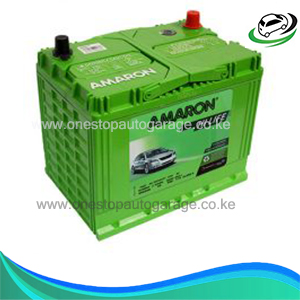-10%
Find the best prices for Rear Axle Bush TOYOTA COROLLA RUNX/ALLEX in Nairobi Kenya.
In the intricate dance of a vehicle’s suspension system, rubber bushes emerge as unsung heroes, silently contributing to stability, comfort, and control. These small yet crucial components play a pivotal role in connecting various suspension parts, providing flexibility, and dampening vibrations. This comprehensive guide will explore the importance of rubber bushes in a vehicle’s suspension, shedding light on their functions and the telltale signs that indicate they may be worn out.
Importance of Rubber Bushes in Vehicle Suspension:
- Vibration Dampening: Rubber bushes are designed to absorb and dampen vibrations generated by road irregularities. As a vehicle traverses uneven surfaces, the suspension components undergo movement. Rubber bushes act as cushions, minimizing the transmission of these vibrations to the vehicle’s chassis and, consequently, to the occupants, contributing to a smoother and more comfortable ride.
- Flexibility and Articulation: Rubber bushes provide flexibility to the suspension system, allowing components like control arms and sway bars to move and articulate. This flexibility is crucial for adapting to changes in road conditions, turning, and absorbing shocks. It ensures that the wheels maintain optimal contact with the road surface, contributing to stability, traction, and overall handling performance.
- Noise Reduction: Rubber bushes play a role in reducing noise within the suspension system. As components move and articulate during driving, metal-to-metal contact can create noise. Rubber bushes act as isolators, preventing direct contact between metal parts and minimizing noise transmission, contributing to a quieter and more enjoyable driving experience.
- Enhanced Steering Response: Rubber bushes also impact steering response. By providing a degree of flexibility and damping, they help maintain proper alignment of steering components, ensuring responsive and predictable steering behavior. This is crucial for maintaining control, especially during cornering and sudden maneuvers.
Signs of Worn-Out Rubber Bushes:
- Excessive Vibration: One of the early signs of worn-out rubber bushes is an increase in vibrations felt through the steering wheel or the vehicle’s chassis. As the rubber bushes lose their ability to dampen vibrations, you may notice an increase in the overall roughness of the ride, indicating the need for inspection and potential replacement.
- Unusual Noises: Worn-out rubber bushes can lead to squeaks, creaks, or clunking sounds, especially when going over bumps or making turns. These noises may indicate that the rubber bushes have deteriorated, allowing metal-to-metal contact within the suspension components. Addressing these sounds promptly can prevent further damage and maintain a quieter ride.
- Handling Issues: As rubber bushes lose their flexibility and integrity, the vehicle’s handling may be compromised. You may experience a decrease in stability, increased body roll during turns, or difficulty maintaining proper alignment. If you notice changes in the handling characteristics of your vehicle, it’s essential to have the suspension system, including the rubber bushes, inspected.
- Uneven Tire Wear: Worn-out rubber bushes can contribute to uneven tire wear. When the suspension system is compromised, it may lead to misalignment, causing tires to wear unevenly. Regularly inspecting your tires for uneven tread wear patterns can help identify potential issues with the suspension components, including the rubber bushes.
- Visible Damage or Deterioration: A visual inspection of the rubber bushes can reveal signs of wear or damage. Cracks, tears, or visible deterioration of the rubber material are indicators that the bushes may be reaching the end of their lifespan. Additionally, if there is excessive play or movement in the suspension components, it may suggest worn-out rubber bushes.
Conclusion:
Rubber bushes are integral components of a vehicle’s suspension system, silently working to provide comfort, stability, and control. Recognizing the signs of worn-out rubber bushes is crucial for maintaining optimal suspension performance and ensuring a safe and enjoyable driving experience. Regular inspections, attentive listening for unusual noises, and addressing any identified issues promptly can extend the lifespan of rubber bushes and contribute to the overall health of a vehicle’s suspension. By staying vigilant and responsive to these signs, drivers can uphold the integrity of their suspension systems, ensuring a smoother ride and enhanced handling on every journey.



